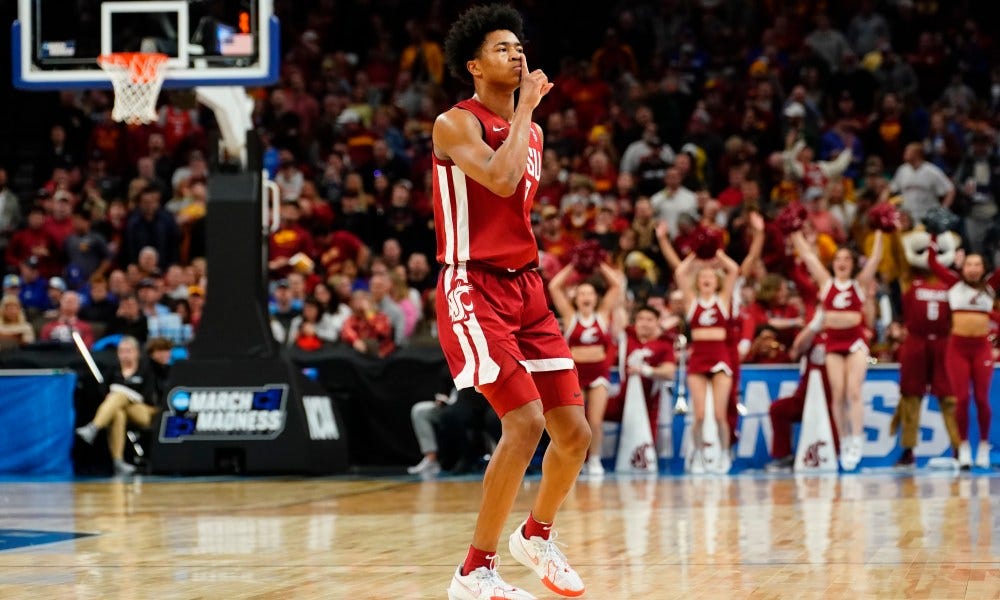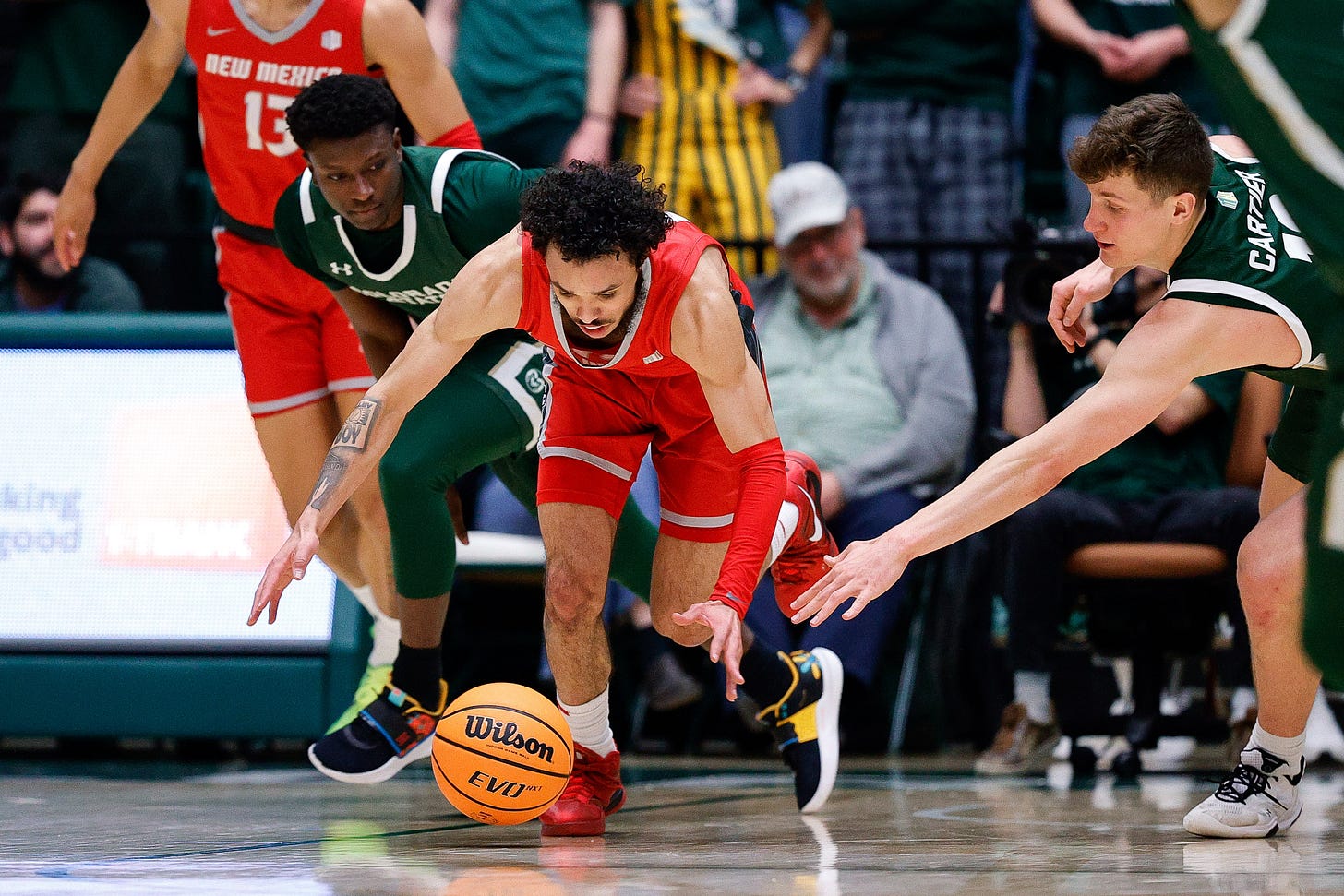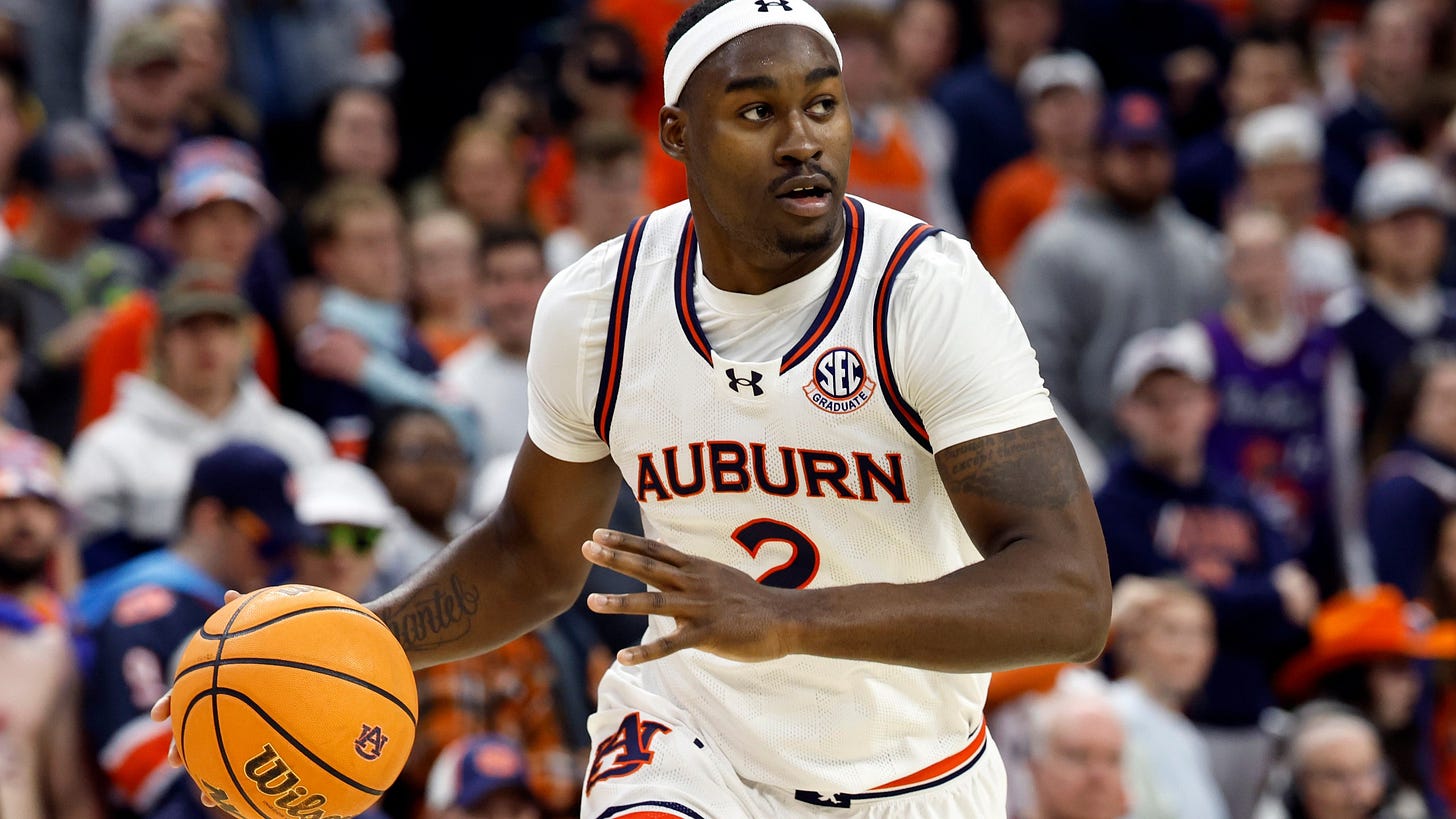My Favorite Two-Way Players in this Class
Hitting on a two-way player is highly beneficial to any front office, and I will be breaking down 3 of my favorite two-way prospects.
Every year we remember those players who go undrafted and immediately sign a two-way contract with a team, and often wonder how those players go undrafted. The more forgotten two-way players are the guys who get drafted and end up signing two-ways, like guys like Amari Bailey did last year. Hitting on a two-way player who can cut a rotation is massive for an organization, and teams like the Lakers and Heat have extended contention windows by hitting on players like Austin Reaves, Alex Caruso, or Duncan Robinson with two-way contracts. Today we are taking a look at my 3 favorite prospects who I have graded out as a two-way player, and what they could offer a team.
Jaylen Wells - Washington State
The Washington State product Jaylen Wells has one of the coolest stories in this year’s draft, coming all the way from Sonoma State, a Division 2 program north of San Francisco, where as a sophomore he would be a member of the Division 2 All American teams, before transferring to Wazzu.
Wells was one of the premier shooters in college basketball this season, shooting 42% from beyond the arc on some absurd shot selection. Wells is already a quality shooter from NBA range, and was one of the best spot-up players in the country, grading out in the 99th percentile on those possessions. Wells tends to have 3 flaws as a player. He is very skinny, he can’t defend, and he can’t get to the rim. The upside of these is they can all be improved by getting in an NBA weight room. Right now Wells doesn’t slide well, but it isn’t outright poor either, and if he can put on weight he could use his 6’7” frame to be passable on that end. Wells doesn’t offer a lot when attacking closeouts either, as his handle is fine, but if he gets bumped by the defender, he tends to immediately be off-balance and fail to get to the rim. If Wells did ever get to the rim, he wasn’t a particularly good finisher either, only being 20th percentile there. He has a good floater that can help offset this and is a good shotmaker in the mid-range. Wells has a shot to play in the NBA because shooters of his size don’t come in spades, and getting someone like him in an NBA weight room could help him become a rotation player down the line.
Jaelen House - New Mexico
By putting Jaelen House on this list I just upset 10 Mountain West fanbases, as he may be the most hated player in the history of the conference. There is a reason for that, as the son of former NBA player Eddie House is one of the most fiery players I have ever seen play basketball, along with leaning into the energy opposing fanbases give him. This fire and passion transfers over to House’s play, as I like to imagine House is listening to Lil Wayne’s 6 Foot 7 Foot the moment before his games start. House plays with a sort of confidence and energy that is always toeing the line of being out of control while he’s on the court. His technique on defense is near perfect, and he has the effort to combine those two to be one of the best defenders in this class. House has amazing hands both on and off the ball. House will frequently pickpocket defenders like he’s a member of Danny Ocean’s crew. House can occasionally struggle to contest shots due to only being 6’1” but he explodes off the floor at maximum effort to attempt to contest shots. The most intrigue I have with House on the defense end is his ability to play off the ball. New Mexico also had Donovan Dent in their backcourt, another undersized point guard, so House was often tasked with playing the free safety roll on the defensive end, where he was excellent. Despite his size House shouldn’t be pigeonholed into only playing at the point of attack in the NBA, and can chase shooters or be a helper with his excellent hands. His main issue outside of size is his aggression can lead him to foul trouble. House just has to become more disciplined in this area.
The offensive end is more of a mixed bag. House has been an up-and-down shooter in his collegiate career, shooting as high as 37%, but finishing his career at a lackluster 33%. The shot also looks a bit off-balance and isn’t super promising. House also has some questions to answer as a passer. While he does do a good job at making good reads, occasionally he gets overaggressive there as well and the possession results in a turnover. House has solid craft, but this tendency to give the ball away limits his ability to play point guard in the NBA, as that tends to be the last thing teams want from a backup.
Jaylin Williams - Auburn
Funnily enough, the third variation of Jalen in this article would also be the third Jalen Williams in the NBA, but this Jaylin fills a different role than either Jaelen or Jaylen in this article. Now as I apologize for that abomination of a sentence, what kind of player is the now Aubrun legend Jaylin Williams? Williams is a bit of a Swiss army knife on the defensive end. He stands at 6’8” with a 230-pound frame, so he has no issue dealing with defenders on the inside, along with knowing how to use his length and strength to contain bigger wings. Williams won’t be able to step outside and defend quicker guards, but his ability to reliably guard 3-5 can be valuable to any NBA team.
Williams’ questions come on the offense end but aren’t supported by the numbers. He was technically a good shooter the past two seasons, shooting 37% from 3 on 3 attempts per contest, but he has one of the most awkward-looking shots I have ever seen. If it isn’t broken don’t fix it I suppose, but I doubt the ability to step out and shoot like this from NBA range. Williams also has a bit of a funny-looking finishing package, but he converted at 76% inside. He has some counters and hook shots to deal with defenders, as well as some sneaky pop to go over guys. If Williams is an NBA player ultimately comes down to how good the shot is, and if he can stick on the floor there, but he is absolutely deserving of a two-way contract.






